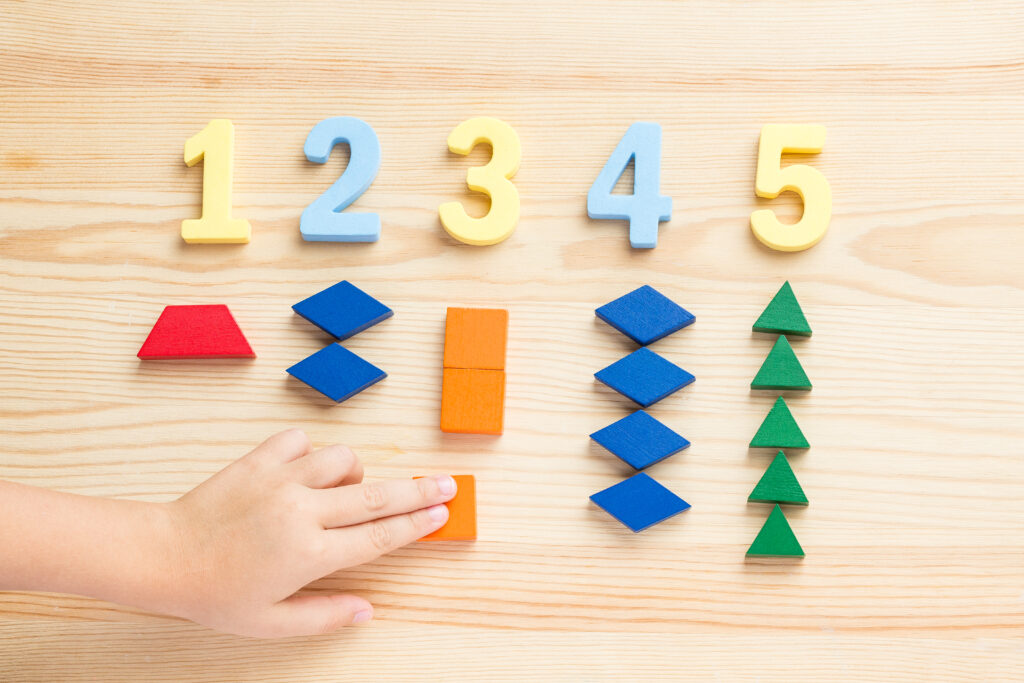

Learn the subitising meaning, why it’s important and how to hone the ability in your child.

Author
Lucy Hart
Updated
April 2024


Learn the subitising meaning, why it’s important and how to hone the ability in your child.

Author
Lucy Hart
Updated
April 2024

Learn the subitising meaning, why it’s important and how to hone the ability in your child.

Author
Lucy Hart
Updated
April 2024

Key takeaways
When you’re playing a game with dice, do you count the dots to know what number you’ve rolled? It’s quite likely that you don’t have to, but instead, you’re able to recognise the number instantly. This ability is called ‘subitising’!
Below, we explain in more detail the subitising meaning, why it’s important, and how you can help your child develop the ability to subitise at home.
Subitising is a term that was introduced by the Swiss psychologist Piaget. It’s the ability to look at a small number of objects and instantly recognise how many objects there are without needing to count. In early years, children look at tally marks, how many fingers are being held up or the dots on dice to help develop this skill.
There are two types of subitising: perceptual and conceptual.
Our brains can only easily subitise numbers up to five — this is called perceptual subitising.
Anything above five is called conceptual subitising. This is because the numbers start to relate to a larger quantity of things and identifying ‘how many’ without counting becomes more difficult.
For example, to subitise six, we’d need to subitise three and three; four and two; or five and one. Only then could we combine the number pairs together to arrive at an answer of six.
Unlock unlimited maths questions
Put your skills to the test with fun exercises + maths games that are proven to boost ability!
Try DoodleMaths for free!
Select a year group
Subitising is important for children’s mathematical development for many reasons:
Subitising is an alternative maths strategy that is more efficient when dealing with smaller numbers. It helps children to see how numbers are made up.
For example, you can make the number eight using many pairs: 1 + 7, 2 + 6, 3 + 5 and 4 + 4. By separating and combining numbers through subitising, children lay the foundations for addition and subtraction.
Children also learn an important mathematical law through subitising: it doesn’t matter in what order you add numbers together, as you always get the same answer! For example, 2 + 3 = 5 and 3 + 2 = 5.
DoodleMaths is an award-winning app that’s filled with thousands of questions and games exploring multiplication, division and more!
Designed by teachers, it creates each child a unique work programme tailored to their needs, doubling their progression with just 10 minutes of use a day.* Try it for free!

*Based on earning 24 stars a day in DoodleMaths. Read full study

You don’t need lots of money or a big bank of resources to help your child with subitising. Here are a few activity ideas:
You can use your hands to visualise numbers. For example, five can be represented by five fingers on one hand, or three fingers on one hand and two fingers on the other.

Make some flashcards that show dot patterns, tally marks and fingers being held up (if you are feeling creative!). Can your child tell you how many there are without counting?
To make this harder, show them a flashcard for only a few seconds and then hide it! This encourages them to subitise rather than count.
Throw a small number of counters in two different colours on a table and ask your child to say what they see.
For example, “I see three red counters and two yellow counters. There are five counters altogether”. You don’t have to use counters either — there are plenty of alternatives that would suffice!

You can put all of the above tips into action while playing board games. Why not check out these mathematical board games to get started!

Parents, sign up for a DoodleMaths subscription and see your child become a maths wizard!

Book a chat with our team
If you’d like to use Doodle’s browser version, please visit this page on a desktop.
To log in to Doodle on this device, you can do so through our apps. You can find out how to download them here: